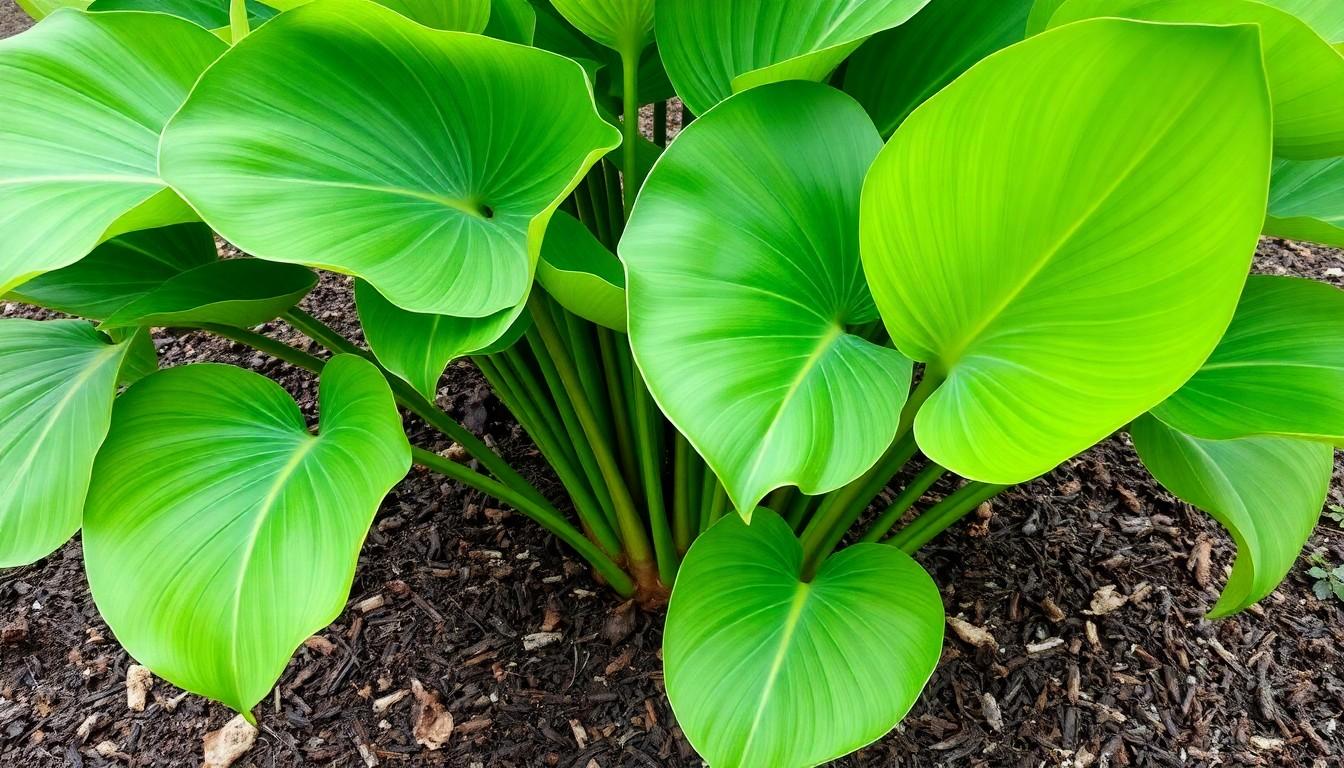Phone:
(701)814-6992
Physical address:
6296 Donnelly Plaza
Ratkeville, Bahamas.

If you’re looking to transform your garden into a tropical paradise, the elephant ears plant is your ticket to paradise. With its oversized leaves that could easily double as a sunshade, this plant not only adds drama but also a splash of vibrant greenery. But don’t let its majestic appearance fool you; caring for these beauties requires a bit of finesse.
Elephant ears plant, known scientifically as Colocasia or Alocasia, thrives in warm, humid environments. They feature large, heart-shaped leaves that can reach up to 3 feet in length, providing an exotic touch to gardens or indoor spaces. With varieties like Black Magic and Hawaiian Punch, each type showcases unique leaf colors and patterns.
Sunlight requirements are moderate. While these plants prefer partial shade, they can tolerate full sun in cooler climates. Soil choice plays a crucial role in their growth; well-draining, rich soil enhances their vitality. Regular watering helps keep the soil consistently moist, as this plant cannot withstand dry conditions.
Fertilization encourages healthy growth. A balanced, water-soluble fertilizer applied every 4 to 6 weeks during the growing season supports leaf development. Pruning dead leaves improves appearance and allows new growth to flourish. Pests such as aphids or spider mites may appear, so regular inspection helps catch any issues early.
Temperature considerations are vital. Elephant ears prefer warm temperatures between 65°F and 75°F. In colder climates, it’s essential to protect them during winter months by bringing them indoors or mulching them heavily.
Overall, elephant ears plants require attention while providing stunning foliage. Proper light, soil, water, and temperature management contribute to their success. Gardeners who invest time in care enjoy a dramatic addition to their landscapes.

Proper care is crucial for the healthy growth of elephant ears plants. Attention to their specific needs maximizes their vibrant appearance and lush foliage.
Watering practices significantly impact the health of elephant ears. Consistently moist soil supports growth, preventing stress and wilting. Water these plants deeply whenever the top inch of soil feels dry. During hot summer months, they may require daily watering. Incorporating a mulch layer helps retain moisture, reducing the frequency of watering.
Soil type plays an essential role in the plant’s health. Elephant ears thrive in well-draining, rich soils enriched with organic matter. A mixture of potting soil and compost provides the nutrients they need for robust growth. Ensuring good drainage prevents root rot, a common issue for these plants. Adjusting pH levels to between 5.5 and 7.0 promotes optimal growth and leaf development.
Fertilization supports lush foliage and overall health. Gardeners should apply a balanced, water-soluble fertilizer every 4 to 6 weeks during the growing season. Following package instructions ensures proper nutrient levels without over-fertilization. Alternate with a slow-release fertilizer at the season’s start for extended nourishment. Monitoring leaf color helps assess nutrient needs; yellowing leaves often indicate a lack of nitrogen.
Light and temperature play crucial roles in the care of elephant ears plants. Understanding these requirements ensures healthy growth and vibrant foliage.
Elephant ears thrive in partial shade, making it suitable for locations that receive dappled sunlight. Full sun exposure is tolerable in cooler climates, but too much direct sunlight can scorch their leaves. Locations with morning sun and afternoon shade offer an ideal balance. When grown indoors, placing them near bright, indirect light helps mimic their natural habitat. Insufficient light may lead to stunted growth and smaller leaves. Observing leaf color can indicate lighting issues; overly pale leaves signify too much sun, while dark green leaves suggest insufficient light.
Temperatures between 65°F and 75°F are best for elephant ears. These plants prefer warmth and do not tolerate frost. Cold temperatures can stunt growth, so monitoring local weather conditions is essential. In colder climates, protecting them during winter months is critical. Bringing them indoors, or applying heavy mulch can safeguard their roots. If temperatures drop below 50°F, initiating protective measures is advisable. Consistent warmth encourages lush growth and maintains the striking appearance of their foliage.
Elephant ears can encounter several common pests and diseases that affect their growth and appearance. Recognizing these issues early enhances the chances of maintaining plant health.
Aphids often appear as small, green or black insects on young leaves. Spider mites manifest as tiny specks and create webbing on foliage. Fungal diseases, such as leaf spot, result in dark spots on leaves. Root rot develops from overwatering, leading to yellowing leaves and wilting. Monitoring plants regularly aids in early detection, allowing for timely intervention.
Insecticidal soap provides effective control over aphids and spider mites. For fungal infections, applying a fungicide can help manage spread. Adjusting watering practices prevents root rot by ensuring well-draining soil. Regularly inspecting plants promotes healthy foliage and reduces pest infestations. Ensuring proper air circulation around the plants minimizes moisture buildup, which discourages fungal growth.
Caring for elephant ears plants can transform any space into a lush tropical haven. With their stunning foliage and unique varieties they add a touch of exotic beauty. However achieving that vibrant look requires attention to their specific needs.
By providing adequate moisture proper lighting and regular fertilization gardeners can ensure these plants thrive. Vigilance against pests and diseases also plays a crucial role in maintaining their health. With the right care elephant ears will flourish and become a standout feature in any garden or home setting.